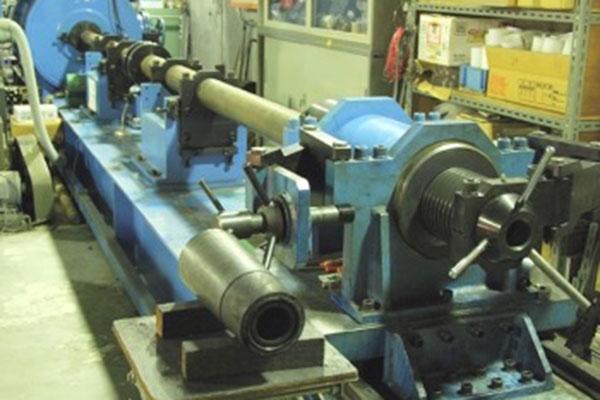Ancient asteroid impacts created the ingredients of life on Earth and Mars

Single stage propellant gun used for the simulation of impact-induced reactions at NIMS. Credit: Yoshihiro Furukawa
There are two explanations for the origins of life's building molecules: extraterrestrial delivery, such as via meteorites; and endogenous formation. The presence of amino acids and other biomolecules in meteorites points to the former.
Researchers from Tohoku University, National Institute for Materials Science (NIMS), Center for High Pressure Science & Technology Advanced Research (HPSTAR), and Osaka University simulated the reactions involved when a meteorite crashes into the ocean.
To do this, they investigated the reactions between carbon dioxide, nitrogen, water, and iron in a laboratory impact facility using a single stage propellant gun. Their simulation revealed the formation of amino acids such as glycine and alanine. These amino acids are direct constituents of proteins, which catalyze many biological reactions.
The team used carbon dioxide and nitrogen as the carbon and nitrogen sources because these gases are regarded as the two major components in the atmosphere on the Hadean Earth, which existed more than 4 billion years ago.
Corresponding author from Tohoku University, Yoshihiro Furukawa, explains, “Making organic molecules form reduced compounds like methane and ammonia are not difficult, but they are regarded as minor components in the atmosphere at that time.”
He adds, “The finding of amino acid formation from carbon dioxide and molecular nitrogen demonstrates the importance in making life's building blocks from these ubiquitous compounds.”
The hypothesis that an ocean once existed on Mars also raises interesting avenues for exploration. Carbon dioxide and nitrogen are likely to have been the major constituent gases of the Martian atmosphere when the ocean existed. Therefore, impact-induced amino acid formation also provides a possible source of life's ingredients on ancient Mars.
Furukawa says, “further investigations will reveal more about the role meteorites played in bringing more complex biomolecules to Earth and Mars.”
Media Contact
All latest news from the category: Physics and Astronomy
This area deals with the fundamental laws and building blocks of nature and how they interact, the properties and the behavior of matter, and research into space and time and their structures.
innovations-report provides in-depth reports and articles on subjects such as astrophysics, laser technologies, nuclear, quantum, particle and solid-state physics, nanotechnologies, planetary research and findings (Mars, Venus) and developments related to the Hubble Telescope.
Newest articles

Silicon Carbide Innovation Alliance to drive industrial-scale semiconductor work
Known for its ability to withstand extreme environments and high voltages, silicon carbide (SiC) is a semiconducting material made up of silicon and carbon atoms arranged into crystals that is…

New SPECT/CT technique shows impressive biomarker identification
…offers increased access for prostate cancer patients. A novel SPECT/CT acquisition method can accurately detect radiopharmaceutical biodistribution in a convenient manner for prostate cancer patients, opening the door for more…

How 3D printers can give robots a soft touch
Soft skin coverings and touch sensors have emerged as a promising feature for robots that are both safer and more intuitive for human interaction, but they are expensive and difficult…





















